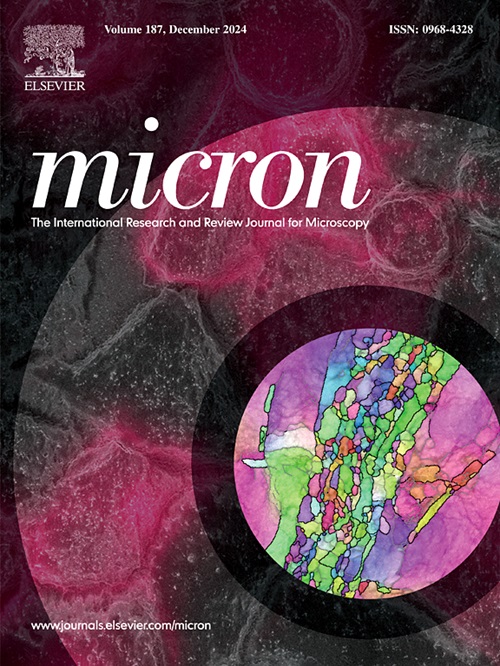Practical considerations for plunge freezing samples over 40 °C for Cryo-EM
IF 2.5
3区 工程技术
Q1 MICROSCOPY
引用次数: 0
Abstract
Cryo-EM is now an established tool for examining samples in their native, hydrated states—a leap made possible by vitrification. Utilising this sample preparation method to directly visualise temperature-responsive samples allows for deeper insights into their structural behaviours under functional conditions. This requires samples to be plunge-frozen at elevated temperatures and presents additional challenges, including condensation within the blotting chamber and difficulties in maintaining a stable sample temperatures. Here, we address these challenges and suggest practical strategies to minimise condensation and reduce temperature fluctuations during the plunge-freezing of samples at elevated temperatures (>40 °C). By preheating equipment and reducing chamber humidity and blotting times, we can improve sample preservation and grid reproducibility. These considerations are then demonstrated on poly(N-isopropylacrylamide) microgels, which exhibit a volume phase transition due to temperature changes.
为冷冻电子显微镜在 40 ° C 以上温度下冷冻样品的实际考虑因素。
低温电子显微镜(Cryo-EM)现已成为一种成熟的工具,可用于检查处于原生水合状态的样品--玻璃化技术实现了这一飞跃。利用这种样品制备方法直接观察温度响应样品,可以更深入地了解它们在功能条件下的结构行为。这就要求样品在高温下急速冷冻,并带来了额外的挑战,包括印迹室内的冷凝和保持样品温度稳定的困难。在此,我们针对这些挑战提出了切实可行的策略,以最大限度地减少冷凝现象,并降低样品在高温(>40 °C)下急冻时的温度波动。通过预热设备、降低箱内湿度和缩短印迹时间,我们可以改善样品保存和网格重现性。然后在聚 N-异丙基丙烯酰胺微凝胶上演示了这些注意事项,该微凝胶会因温度变化而出现体积相变。
本文章由计算机程序翻译,如有差异,请以英文原文为准。
求助全文
约1分钟内获得全文
求助全文
来源期刊

Micron
工程技术-显微镜技术
CiteScore
4.30
自引率
4.20%
发文量
100
审稿时长
31 days
期刊介绍:
Micron is an interdisciplinary forum for all work that involves new applications of microscopy or where advanced microscopy plays a central role. The journal will publish on the design, methods, application, practice or theory of microscopy and microanalysis, including reports on optical, electron-beam, X-ray microtomography, and scanning-probe systems. It also aims at the regular publication of review papers, short communications, as well as thematic issues on contemporary developments in microscopy and microanalysis. The journal embraces original research in which microscopy has contributed significantly to knowledge in biology, life science, nanoscience and nanotechnology, materials science and engineering.
 求助内容:
求助内容: 应助结果提醒方式:
应助结果提醒方式:


